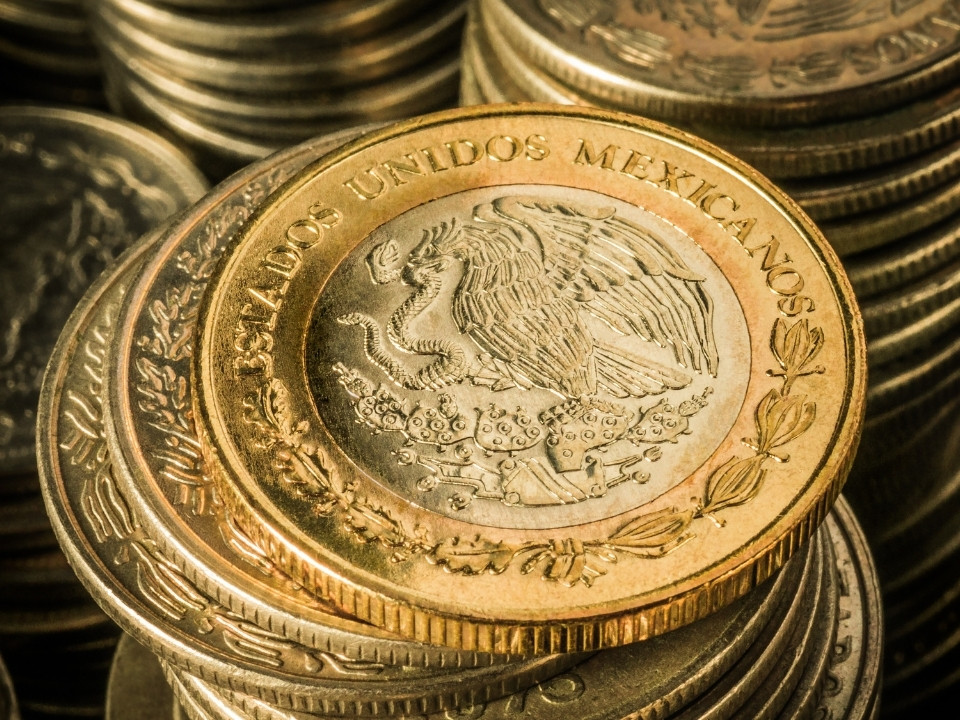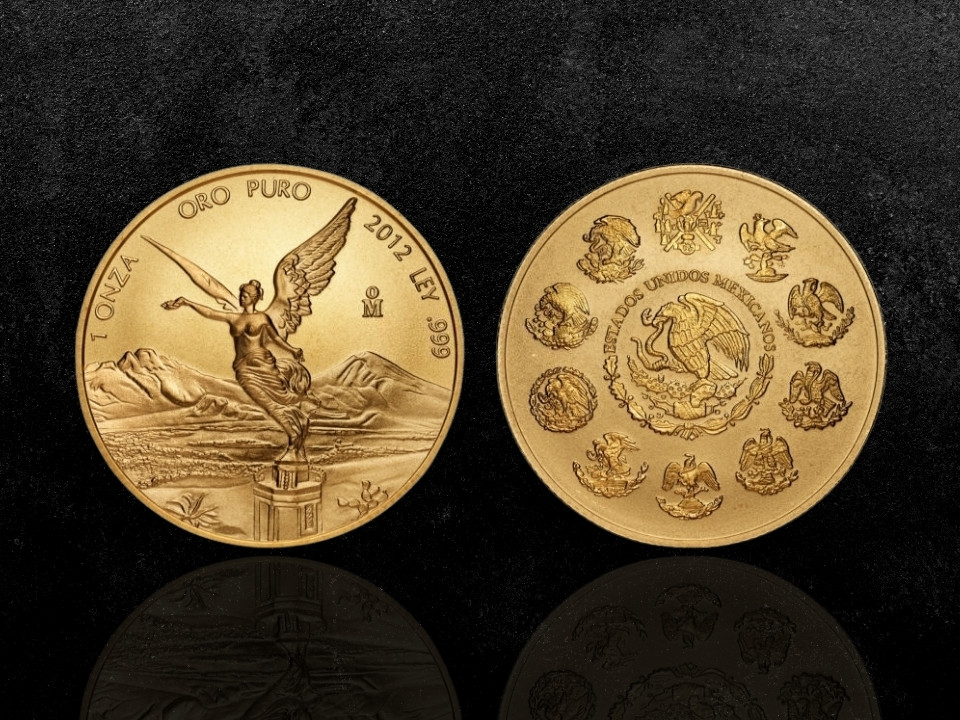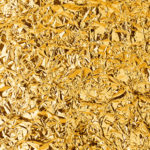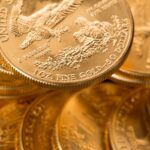When we think about Mexico today, it’s easy to imagine clear blue water, nice weather, and sandy beaches. What we’re likely to forget, however, is that Mexico also has large silver and gold deposits.
As a result, if you’re a gold collector or a numismatist in general, you may have overlooked Mexican gold coins initially. You may even feel skeptical about buying them. To help you learn more about them, we compiled this guide to these fascinating coins.
What are Mexican Gold Coins?
Mexican gold coins come in a range of face values and designs. The modern Mexican Mint struck the first gold coin in honor of the nation’s independence in 1921. These coins, known as Centenarios, are highly collectible.
You will find pesos minted in gold from as far back as 1870. The Mexican government uses the Libertad as its official gold bullion coin today.
Information About the Mexican Mint
La Casa de Moneda de México, or the Mexican Mint, dates back centuries to the invasion of Mexico by the Spanish. Founded in 1535, it is one of the longest-operating mints worldwide.
Some of the first coins struck there were the silver eight-real coins and later the silver peso, both of which circulated widely in colonial America as well as in Asia and influenced the currencies in Japan, China, and the United States.
Today, Mexico City’s National Museum of Culture, the Museo Nacional de las Culturas, occupies the historic building that housed La Casa de Moneda starting in 1731.
Are Mexico’s Gold Coins Collectable?
Yes, the Mexican-minted gold coins are highly sought after, especially if in “mint condition.” Nineteenth-century coins are scarce and highly sought after when in good condition. Designs on the coins vary based upon when and why the country issued them. Coins struck after 1870 usually featured the denomination on one side and the bust of the country’s current leader on the other.
The original Centenarios, minted in 1921, contain 1.2 ounces of gold with a purity of 0.900. While their face value is 50 Pesos, they were never meant to be currency but instead commemorative coins. They now sell for thousands of dollars.
In 1981, the Mexican Mint began issuing the Libertad coin, which was minted in both silver and gold versions, each with 99.9% precious metal. In addition to the standard bullion coins, the Mint also struck a limited number of collectors’ proof and reverse proof versions in both metals. The Reverse Gold Proof Libertad is the most collectible coin today, in terms of low production numbers.
Coin Sizes and Designs

Peso Coins
The Peso coins come in the following denominations:
- 2
- 5
- 10
- 20
- 50
Most gold Pesos are collectible depending on their age and composition. Some collectors prefer them because of their purity and relatively lower entry price compared to current coins.
Centenarios
The 50 Peso, or Centenario, first minted in 1921, is the most popular. In 1921, to commemorate a centennial of independence since the Mexican victory in their war with Spain, the nation issued the Centenarios, gold bullion coins with the Winged Victory statue depicted on one side, with volcanoes Popocatepetl and Iztaccíhuatl behind her.
Winged Victory holds a wreath aloft in her right arm, representing the independence of Mexico. In her left hand, she has broken shackles symbolizing the breaking of the bonds of colonialists. This image represents the famed statue, fondly called El Ángel, that the people of Mexico erected in 1910 in central Mexico City to celebrate 100 years since the beginning of their war for independence from Spain.
The volcanoes in the background take their names from an Ancient Aztec love story. The tale is about a princess who fell in love with someone her father thought was unsuitable. As a result, the father sent the young man to war, believing it would lead to his death.
The princess was sad and couldn’t imagine living without her lover or marrying someone else. She became convinced that he would die in battle and killed herself to save herself the pain of loss.
Her lover did survive but was heartbroken at finding her dead. He took her up to the mountain, hoping to revive her. He, however, froze to death instead. The Gods then took pity on the couple and sent a blizzard to cover their bodies.
The legend then says that the young man was so upset that his lover died that he vowed to punish the people. He became a volcano so that he could vent his rage.
Looking at the background, you’d never imagine that there was such a sad story behind it, but it is interesting to hear about it.
On the opposite site of the coin is the Mexican Coat of Arms depicting a golden eagle holding a rattlesnake in its mouth while sitting on a cactus. This design reflects the traditional legend of the god Huitzilopochtli telling the Aztec people they should build their city wherever they saw an eagle devouring a snake atop a cactus.
The nation produced these coins from 1921 to 1931. The ravages of World War II renewed the popularity of gold, and so the Centarios were re-issued in the 1940s.
As an interesting side note, the Mexican government never accepted these as legal tender. As a result, many coins that survive today are in good condition since the government never officially circulated them.
The mint retired the Centenario in 1972, opting instead to switch over the Libertad in 1981.
Libertads

What makes the Libertad unique is that it doesn’t have face value. There’s only one other country that issues bullion coins in this manner. It is, however, legal tender, and the value depends on the current gold price.
The Libertad debuted in 1981, with the government striking close to a million coins. These come in the following weight categories:
- ¼ ounce
- ½ ounce
- 1 ounce
The original 1981 coins were all gold, but beginning in 1982 the government began minting them in silver as well.
The 1981 coins are popular with collectors despite looking like the Centenarios. While the Mint initially issued many coins, subsequent re-issues have been sporadic, making them valuable despite the number in circulation.
The Libertad also shows a picture of Winged Victory, the Angel of Independence. The design was similar to that of the Centenario during the initial release, but it changed over time.
The back features the Mexican Crest, with the eagle, snake, and cactus, encircled by the phrase, “Estados Unidos Mexicanos,” the United States of Mexico.
It was only a decade later that the mint produced more Libertads. This time, they introduced two additional weights: one-tenth and one-twentieth of an ounce. Over the next few years, demand for one-ounce coins rose, and the government obliged by minting more coins.
No issue ever, however, matched the volumes of the 1981 Libertads. If anything, the authorities realized that it was wise to restrict the number of pieces they issued. In 2000, the mint struck less than 16,000 of these coins.
Other than that, production over the last three decades was sporadic. Today, however, the government produces a small number of coins annually.
If you find a Libertad where the Angel of Independence faces the side, the coin dates to 2000 or later. The Winged Victory angel stands on a pedestal, giving her a little more distance from the mountains in the background.
The volcanoes in the background feature more details and even some of Mexico’s flora. The designers also placed the mint markings with more care than on the Centenario. They skirt the rim of the coin rather than detracting from the image itself.
Many people think the new post-2000 design is more modern and attractive since it doesn’t clutter the coin as much.
The Proof Gold Libertad
The half-ounce proof version of the Libertad appeared in 1989 for the first time. These coins are collectible because they had a one-year run. After that, the design reappeared as a quarter-ounce coin in 2004.
The authorities now mint the coin annually.
The Reverse Proof Gold Libertad
The Reverse Proof Gold Libertad first appeared in 2018 with a limited 1,000-coin issue. The following year, production halved, making it one of the rarest of these coins.
These coins tend to get snapped up by collectors before circulating. In addition, they are aesthetically pleasing due to the contrast between the images and background. Proofs contain a frosted angel with a polished background, with the inverse for the Reverse Proofs.
Should You Buy Mexican Coins?

Mexican coins have a rich history and feature beautiful designs. Understanding something of the history of the Mexican people makes them even more desirable.
With so many collectors in the United States collecting U.S. currency, these coins may be slightly undervalued. As a result, you may get them at favorable rates. Some occasionally sell for less than the spot value of gold.
The prices range from a few hundred dollars to thousands of dollars, accommodating investors at any level.
What to Consider When Buying
If you wish to buy the coins as collectibles, it’s essential to consider their condition and rarity. Mint State 70 is the best possible condition for currency. Such coins still look as they did when the government minted them, and they have no flaws.
To keep the coins in this state, the collector would typically store them in a protective cover. Therefore, it might be wise to ensure that your purchase includes a cover—or add one if it doesn’t.
The second-best state is Mint State 69. These coins still look much like they did initially but will have one or two minor flaws. The key here is that the errors should not mar the image significantly.
Naturally, the more perfect the piece, the higher its value is likely to be. The exception is when the currency is so rare that it’s almost impossible to find, regardless of the condition.
When collecting, you should decide what your goals are. Do you:
- Want gold? If so, then choose a fairly common gold coin to get the best price.
- Want something beautiful? Look for a piece that’s in good condition. It does not need to be in mint condition but shouldn’t have too many flaws.
- Want a coin collection that will grow beyond its intrinsic value? You’ll have to spend more on mint-quality pieces or uncirculated currency.
Do You Need Some Advice About Investing in Gold?
Gold is an investment that appreciates with time. So even if the coin itself has no intrinsic value, the metal does.
Are Mexican coins the correct investment for you? Complete our simple inquiry form, and we’ll help you find the right Gold IRA partner.





